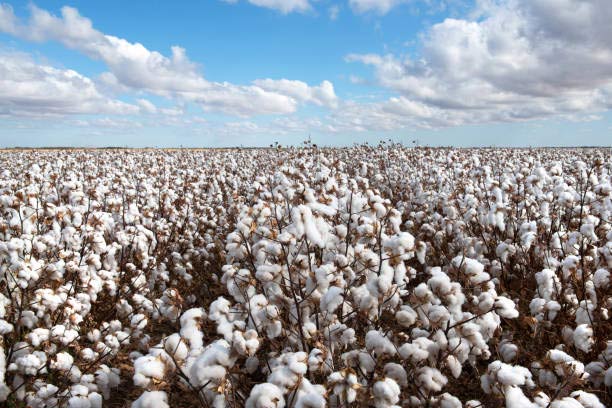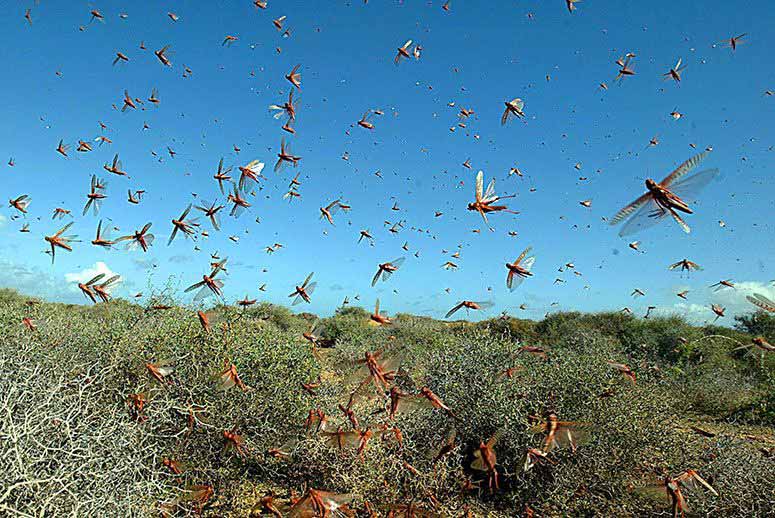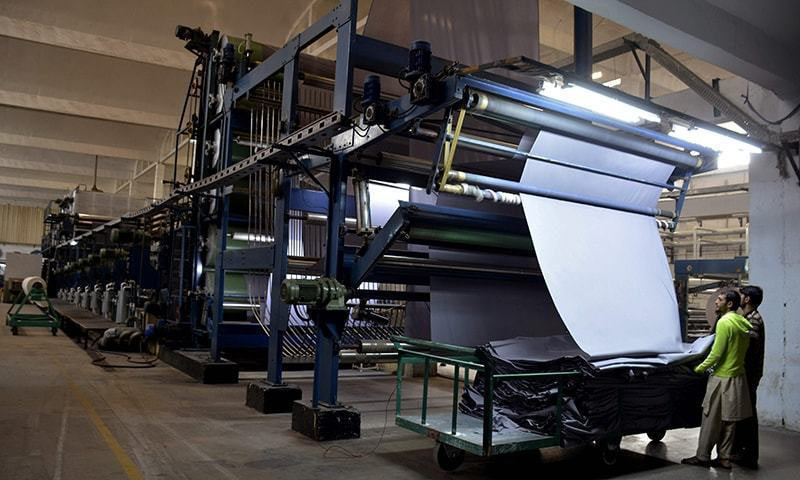Cotton Production Declines 34% in FY21, Here is Why
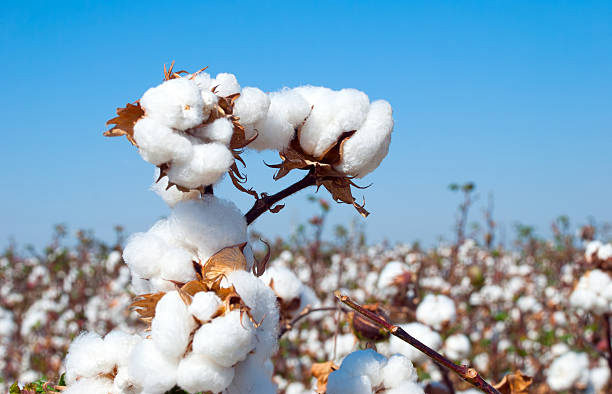
The production of cotton declines in the fiscal year 2021 to 5.57 Million Bales ( of 155 Kg per Bale) compared with the last year’s 8.48 Millin bales (of 155 Kg per Bale) during the same period. On the 3rd of February, 2020, the Pakistan Cotton Ginner Association (PCGA) released its arrival report showing a 34% reduction in cash crop arrivals compared with the same period of last year.
In the Fiscal Year(FY) 2020/21, cotton production is now expected at 4.7 million Bales( 480 lb per Bale), down 24 percent from the last year’s production level of 6.2 Million Bales (480 lb per Bale). The FY2020/21 production estimate is derived from the 75 percent of the cotton crop that has already been harvested and delivered to ginneries.
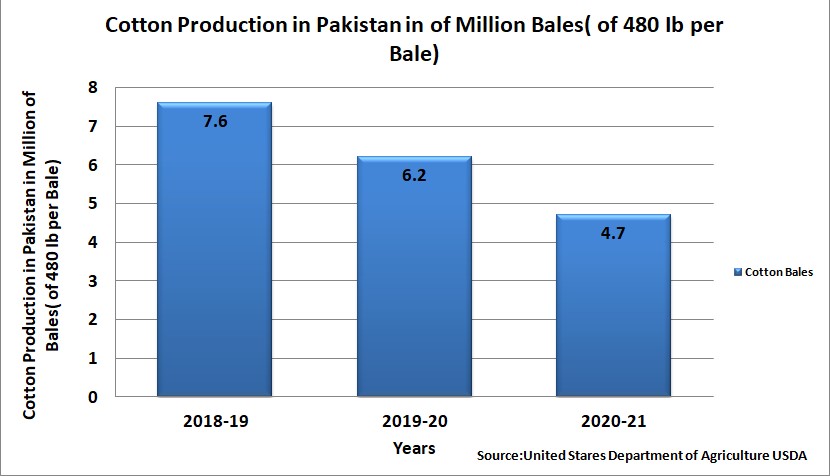
Comparison of Cotton production in Pakistan From 2018-20
On October 2, 2020, the Cotton Crop Assessment Committee (CCAC) assessed cotton production at 8.6 million 170 kg bales (6.7 million 480 lb bales), but there was strong industry consensus that the final production estimate would be much lower given the pace of arrivals recorded by the Pakistan Cotton Ginners Association (PCGA). In its November 15th report, the PCGA showed arrivals at 4.03 million bales of 155 kg (equivalent to 2.9 million bales of 480 lb), down 41 percent from the same period last year. This production level matches MY 1984/85 production, which Pakistan achieved 35 years ago with old production technology.
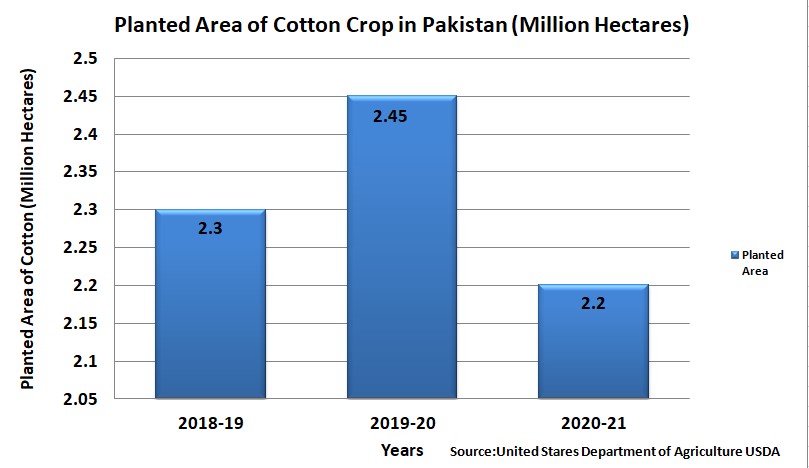
Comparison of Planted area of Cotton crop in Pakistan From 2018-20
Why cotton production dropped a historically low
The reasons why cotton production plunged are multiple.
- The shortfall in cotton production is mainly due to a 10 percent decrease in area planted compared to the preceding year. In FY 2019/2020, the cotton crop was planted in 2.45 Million Hectares which is reduced to 2.20 million Hectares for FY 2020/21.
- Farmers turned to plant other crops, like sugarcane, rice, and corn, because of better prices and government support. In contrast, cotton growers do not receive a support price and prices in the local market are affected by a variety of factors like the size of the crop, prices in the international market, government and industry policy, and the demand for cotton and textile products in the domestic and international market.
- During the early stages of crop growth, some cotton acreage was initially damaged by locusts, but most of this was replanted, putting further demand pressure on the low supply of good quality cottonseed.
- Severe rains during the monsoon season (July-September) affected the crop in the main growing areas of Punjab and Sindh provinces. Sources indicate that around one million bales of cotton were damaged due to these rains.
- Heavy rains also resulted in severe pest infestations of whitefly and pink bollworms that went uncontrolled throughout the growing season, due to the ineffectiveness of existing pesticides. The FY 2020/21 cotton crop was on target until August, when pressure from pests began to take effect, resulting in lower yields.
Impacts of Low Cotton Production On Textile Industry
The Textile Industry of Pakistan is back to its full capacity despite the persistence of the global pandemic COVID-19 and seems to be on a track to achieve higher export targets. The Government of Pakistan’s effective management of COVID-19 and early opening of the industry has provided a required boost to the textile industry as the global buyers partially diverted their orders to textile manufacturers in Pakistan and away from manufacturers in China, India, and Bangladesh, which were dealing with textile production stoppages due to the worsening of the COVID-19 crisis in their countries. The export sector of Pakistan is highly dependent on the textile industry: Pakistan’s textile industry accounts for 60 percent of the country’s annual export earnings.
To keep this momentum of the textile industry, the shortfall of cotton production should be offset. The Government must provide raw cotton to the textile sector to meet the 13% increased consumption of raw cotton and this will be done through an increase in imports of cotton in FY 2020/2021, which is expected at a record 4.9 million Bales (480 lb per Bales) as compared to the 4.0 Million Bales (480 lb per Bale) of last year.
Read Also : Pakistan’s textile demand reaches at its highest


